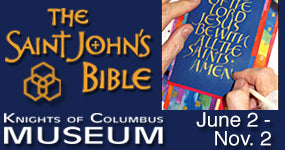As we learned during our last look at the meanings behind New Haven’s street names, assumptions can get you into trouble.
The same even goes for Assumption Street, a tiny, modest residential block near the North Haven border. You might think the name suggests a literary reference the namer liked, or a favored aphorism. The real explanation is romantic in a completely different way, and totally unguessable: it’s a tribute to Assumption Palmieri, the wife of the block’s developer Frank Palmieri.
One road where the meaning might seem readily apparent is State Street, though what it lacks in surprise it makes up for in significance. Given in 1784, the name commemorates Connecticut’s statehood secured by America’s victory in the Revolutionary War, and while “State” might sound sober and institutional to contemporary ears, it was a highly symbolic and celebratory word for the former colonists. The naming wasn’t just an acknowledgment of their victory but also of the imperial enemy’s defeat: it replaced Queen Street, which had been a nod to the British crown.
sponsored by
Still extending southward from the newly minted State Street was Fleet Street—another nod to England, named after London’s very famous alley—which was done away with in 1860, when the town council voted to unify it with State. Today, the roadway has become a testament to the city’s cosmopolitan openness to other places: it connects drivers to East Rock (both the neighborhood and the park), Fair Haven, Hamden and North Haven; the train station on Union Avenue, which presents a popular option for traveling to New York City; and I-91, a major regional thruway which could take you all the way to Canada if you let it.
One word often confused with thruway is “parkway,” which instead describes roads conceived and implemented with greenery in or around them. Contrary to the common misconception, parkways can be short—which, in the case of Tower Parkway, is both true and a touch ironic. Less than a quarter mile long, it’s basically a pregnant curve, routing Grove Street to the Whalley/Goffe/Dixwell convergence that connects downtown with so much of the western part of the city and beyond. It’s named for John Tower, whose mayorship of New Haven from 1925-28 was marked by a focus on public infrastructure projects, including this very parkway. Before becoming mayor, he was an upstanding figure in Westville, holding seats on the village’s “fire, police and school boards” (Doris B. Townshend, The Streets of New Haven: The Origin of Their Names, 2nd ed., 1998).
sponsored by
On the other side of town is another politically significant name emblazoned on green rectangles: Forbes, as in Forbes Avenue, named after a family of shipbuilders led from Salem, Massachusetts, to East Haven by Jehiel Forbes during the colonial era. The vessels they engineered were “fashioned right in the road and launched from Stable Point” (Townshend) where I-95 crosses Forbes Avenue today. That’s on the eastern side of the harbor, in the portion of New Haven that was annexed from East Haven in 1881, close to where the Mill and Quinnipiac Rivers go their separate ways. The Forbeses’ house was burned during the infamous British raid of New Haven on July 5, 1779, but the crafty family was well-equipped to rebuild—and in more ways than one, producing a handful of local political leaders, including three East Haven selectmen, across subsequent generations.
One thoroughfare old Jehiel Forbes definitely wouldn’t have heard about is Fountain Street, which breaks off from Whalley Avenue in the heart of Westville near the northern tip of Edgewood Park. Until the mid-1800s, the road was called Broad Street; by 1868, “Fountain” had been adopted. The reason behind the change isn’t precisely known, though it’s educatedly guessed at: there was a public pipe-fed horse trough where it intersected with Whalley, then named Main Street.
Main, by the way, was the first New Haven road to be macadamized, made possible by New Havener Eli Whitney Blake who, having inherited certain traits and skills from his famous uncle Eli Whitney, invented a mechanized stone-crushing system that revolutionized roadbuilding in New Haven and beyond. Memorializing his surname on nearby Blake Street was really the least the city could do, don’t you think?
Written and photographed by Dan Mims.










